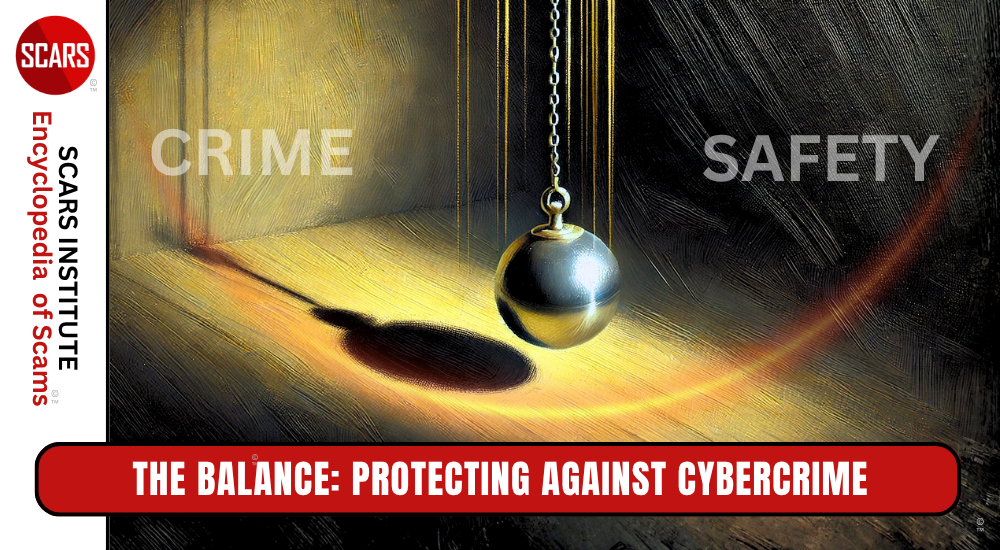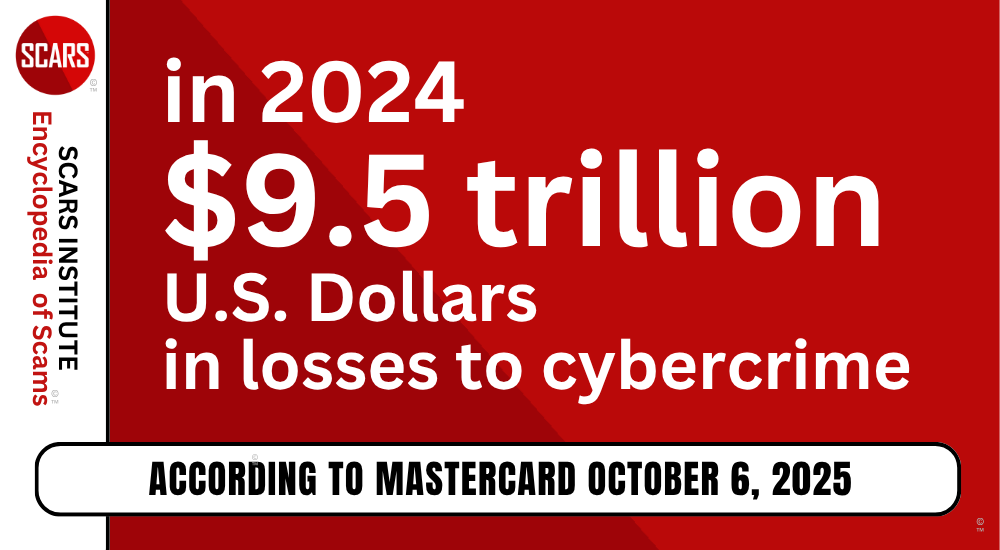An Important Warning About A Cryptocurrency Scam Using An Investment Strategy Called Liquidity Mining
Scammers may refer to the investment opportunity as a ‘liquidity pool’, ‘liquidity mining’, or ‘mining pool’ – for purposes of this alert, the term liquidity mining will be used to describe all iterations of the scheme.
This is a variation on the Pig Butchering Crypto Relationship/Investment scam. In Pig Butchering scams it is a straight investment with high return, without the complication of the liquidity minding aspect.
Introduction
This is where the scammers exploit owners of cryptocurrency, typically Tether (USDT) and/or Ethereum (ETH).
The scammer builds a professional or personal relationship with victims over a few days to weeks, gives instructions for purchasing if the victims do not already own cryptocurrency, and entices them to participate in liquidity mining by guaranteeing a return on investment of one to three percent daily. Scammers convince victims to link their cryptocurrency wallets to a fraudulent liquidity mining application. Scammers then wipe out the victims’ funds without notification or permission from the victim.
Since January 2019, according to the FBI’s Internet Crime Complaint Center (IC3) and open source, this scam has been responsible for over $70 million in combined victim losses.
SCARS NOTE: it is very important to know that cryptocurrency is not automatically gone. It can be traced and if it is sitting in someone’s wallet, it can be recovered by law enforcement. See below.
How This Scam Works:
In the direct approach:
- Scammers approach potential victims through an unsolicited direct message (DM) on social media, dating applications, or messaging services such as Facebook, Instagram, Twitter, LinkedIn, WhatsApp, etc.
- Victims may also learn of the fraudulent liquidity mining site through someone they know who is unwittingly being scammed on the same platform and has been unknowingly turned into a mule.
- Scammers do not differentiate between individuals who own or do not own cryptocurrency, directing victims who do not already own cryptocurrency to set up an account with a wallet service and purchase cryptocurrency. The scam does not require a minimum investment, allowing the victims to “invest” any amount they want.
- In the Direct Messaging (DM) approach, scammers send out unsolicited messages to potential victims through social media or messaging services. The scammer engages the victim in conversation and attempts to initiate a personal or professional relationship (these can even become a romance), building trust over a period of days to weeks.
- During this period, the scammer will bring up the topic of cryptocurrency investment opportunities, including liquidity mining. The scammer states they have used this technique for a long time and have seen an amazing return on investment. The scam is not immediately apparent since the overall conversation is two people trying to get to know each other.
In the word-of-mouth approach:
- Victims who invested in the scammers’ liquidity mining initially see the purported returns on investment, building a false sense of security that encourages victims to continue purchasing and “investing” additional cryptocurrency.
- The first victim then tells their contacts about this lucrative investment opportunity, bringing more victims into the scam.
- The scammers then proceed to empty the news victims’ wallets. This approach may be more effective since the fraudulent platforms are recommended by someone a victim trusts rather than an unknown party.
- Whatever initial contact method is used, victims who express an interest in the investment receive a link to the fraudulent liquidity mining application.
- In order to begin investing, the victim must link their cryptocurrency wallet to the application. The scammers instruct victims on how to connect their cryptocurrency wallet to the liquidity mining operation by clicking a button to receive a so-called mining certificate, voucher, or node, in exchange for a small fee.
- A pop-up designed to mirror the interface of the wallet application presents a list of permissions it is allegedly requesting.
- By clicking the link and accepting the permissions presented, victims unknowingly authorize scammers to pull an unlimited amount of funds out of their cryptocurrency wallets without permission or notification.
In this Liquidity Mining Scam, victims move cryptocurrency from their wallets to the liquidity mining platform and see the purported returns on a falsified dashboard. Believing their investments to be a success, victims purchase additional cryptocurrency. Scammers ultimately move all stored cryptocurrency and investments made to a scammer-controlled wallet.
Once the victim’s money is stolen, the victim typically contacts their wallet provider or the customer service portal on the scam application. Individuals purporting to be customer service representatives for the scam may present one of several explanations as to where the money went and why it is no longer accessible, culminating in the assertion that the victim needs to deposit additional funds in order to receive their money back. Victims are unable to reclaim their funds even if they add additional funds as directed. (But remember that the crypto may be recoverable by law enforcement after the scam)
Actions to Protect Yourself
- The FIRST RULE – do not invest in opportunities that you do not thoroughly understand.
- The SECOND RULE – do not invest in anyone that you cannot completely verify.
- Be cognizant that investors in legitimate liquidity mining operations deposit funds into the platform and later withdraw the original funds along with any returns generated. Reconsider joining pools that stray from this procedure. In a legitimate liquidity mining process, returns are usually tied to cryptocurrency market fluctuations in the specific cryptocurrency or cryptocurrency pair being used.
- Be vigilant when learning of investment opportunities via online research. Scam websites or applications are not usually advertised online, nor are they allowed to be indexed by webcrawlers from search engines like Google and others – however, Google often mistakes fake website for real ones.. Verify the spelling of web addresses, websites, and email addresses that look trustworthy, but may be imitations of legitimate websites.
- If you are concerned about the legitimacy of the domain, do not connect your cryptocurrency wallet.
- Do not send payment to someone you have only spoken to online, even if you believe you have established a relationship with the individual.
- Authenticate all links sent from known and unknown contacts before clicking.
- Periodically use a third-party token allowance checker to determine whether you have inadvertently permitted any sites or applications access to your wallet.
Reporting Notice
If you believe you have been a victim of a Liquidity Mining Scam or any other other fraudulent scheme, first report this to your local police. They may or may not know how to help you, but you need to get it reported and get a report number.
Next, we recommend that you file a report with the FBI’s Internet Crime Complaint Center at www.ic3.gov. If possible, include the following:
- Identifying information about the individuals, including name, phone number, address, and email address.
- Financial transaction information such as the date, type of payment, amount, account numbers involved (to include cryptocurrency wallet), the name and address of the receiving financial institution, and receiving cryptocurrency addresses.
- We also recommend that you file a complaint with the U.S. Federal Trade Commission at https://reportfraud.ftc.gov/#/?orgcode=SCARS
- You may also need to file a complaint with your national cybercrime police unit – see our directory for each of them.
-/ 30 /-
What do you think about this?
Please share your thoughts in a comment below!
RATE THIS ARTICLE?
LEAVE A COMMENT?
Recent Comments
On Other Articles
- Nikolaus on Dating Scammers Paradise: Ivory Coast: “The Ivory Coast romance scam is still going on. It seems that local authorities don’t handle the issue effectively!” Dec 10, 02:17
- on The SCARS Institute Top 50 Celebrity Impersonation Scams – 2025: “Thank you – we will.” Dec 7, 11:41
- on The SCARS Institute Top 50 Celebrity Impersonation Scams – 2025: “You should add Sean Bean to your list of Celebrities. This one is very good, and persistent. He will be…” Dec 2, 12:07
- on How You Think & Talk About Your Scam Affects Your Recovery: “I have hung on to the scams for far too long. With the intervention of an all-merciful God, I have…” Nov 6, 22:13
- on Disengaging From A Fake Scam Relationship: “Taci, you may want to join our new support community at www.SCARScommunity.org” Nov 6, 03:01
- on Disengaging From A Fake Scam Relationship: “This particular article helped me discover the many things I did wrong the first time I was scammed. I should…” Nov 5, 22:49
- on About the SCARS RomanceScamsNOW.com Website – 24 Years Published: “It was unavailable for a few days, but it is available again. If he would be interested, he is welcome…” Nov 5, 00:59
- on About the SCARS RomanceScamsNOW.com Website – 24 Years Published: “My husband has been scammed and your classes have been helping him but now he can’t seem to access them.…” Oct 26, 14:57
- on Talia Shepard – Impersonation Victim – Stolen Photos – 2024: “Hi, I’m Patrick from Belgium and I found this site by chance, so I just got to know it, and…” Oct 17, 23:46
- on Talia Shepard – Impersonation Victim – Stolen Photos – 2024: “Hallo ik ben Patrick uit Belgie en het is in verband over PayPal. Ik heb het dit jaar spijtig genoeg…” Oct 17, 23:08
ARTICLE META
Important Information for New Scam Victims
- Please visit www.ScamVictimsSupport.org – a SCARS Website for New Scam Victims & Sextortion Victims
- Enroll in FREE SCARS Scam Survivor’s School now at www.SCARSeducation.org
- Please visit www.ScamPsychology.org – to more fully understand the psychological concepts involved in scams and scam victim recovery
If you are looking for local trauma counselors please visit counseling.AgainstScams.org or join SCARS for our counseling/therapy benefit: membership.AgainstScams.org
If you need to speak with someone now, you can dial 988 or find phone numbers for crisis hotlines all around the world here: www.opencounseling.com/suicide-hotlines
A Note About Labeling!
We often use the term ‘scam victim’ in our articles, but this is a convenience to help those searching for information in search engines like Google. It is just a convenience and has no deeper meaning. If you have come through such an experience, YOU are a Survivor! It was not your fault. You are not alone! Axios!
A Question of Trust
At the SCARS Institute, we invite you to do your own research on the topics we speak about and publish, Our team investigates the subject being discussed, especially when it comes to understanding the scam victims-survivors experience. You can do Google searches but in many cases, you will have to wade through scientific papers and studies. However, remember that biases and perspectives matter and influence the outcome. Regardless, we encourage you to explore these topics as thoroughly as you can for your own awareness.
Statement About Victim Blaming
Some of our articles discuss various aspects of victims. This is both about better understanding victims (the science of victimology) and their behaviors and psychology. This helps us to educate victims/survivors about why these crimes happened and to not blame themselves, better develop recovery programs, and to help victims avoid scams in the future. At times this may sound like blaming the victim, but it does not blame scam victims, we are simply explaining the hows and whys of the experience victims have.
These articles, about the Psychology of Scams or Victim Psychology – meaning that all humans have psychological or cognitive characteristics in common that can either be exploited or work against us – help us all to understand the unique challenges victims face before, during, and after scams, fraud, or cybercrimes. These sometimes talk about some of the vulnerabilities the scammers exploit. Victims rarely have control of them or are even aware of them, until something like a scam happens and then they can learn how their mind works and how to overcome these mechanisms.
Articles like these help victims and others understand these processes and how to help prevent them from being exploited again or to help them recover more easily by understanding their post-scam behaviors. Learn more about the Psychology of Scams at www.ScamPsychology.org
Psychology Disclaimer:
All articles about psychology and the human brain on this website are for information & education only
The information provided in this article is intended for educational and self-help purposes only and should not be construed as a substitute for professional therapy or counseling.
While any self-help techniques outlined herein may be beneficial for scam victims seeking to recover from their experience and move towards recovery, it is important to consult with a qualified mental health professional before initiating any course of action. Each individual’s experience and needs are unique, and what works for one person may not be suitable for another.
Additionally, any approach may not be appropriate for individuals with certain pre-existing mental health conditions or trauma histories. It is advisable to seek guidance from a licensed therapist or counselor who can provide personalized support, guidance, and treatment tailored to your specific needs.
If you are experiencing significant distress or emotional difficulties related to a scam or other traumatic event, please consult your doctor or mental health provider for appropriate care and support.
Also read our SCARS Institute Statement about Professional Care for Scam Victims – click here to go to our ScamsNOW.com website.


















Thank you for your comment. You may receive an email to follow up. We never share your data with marketers.